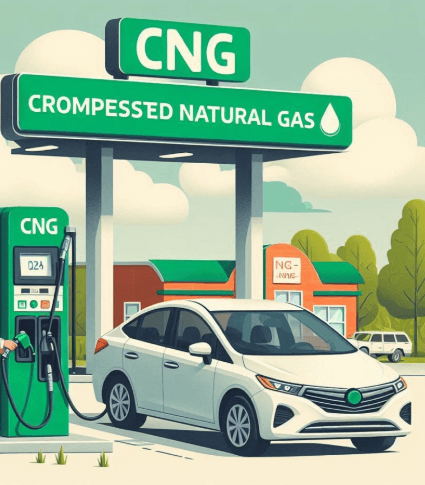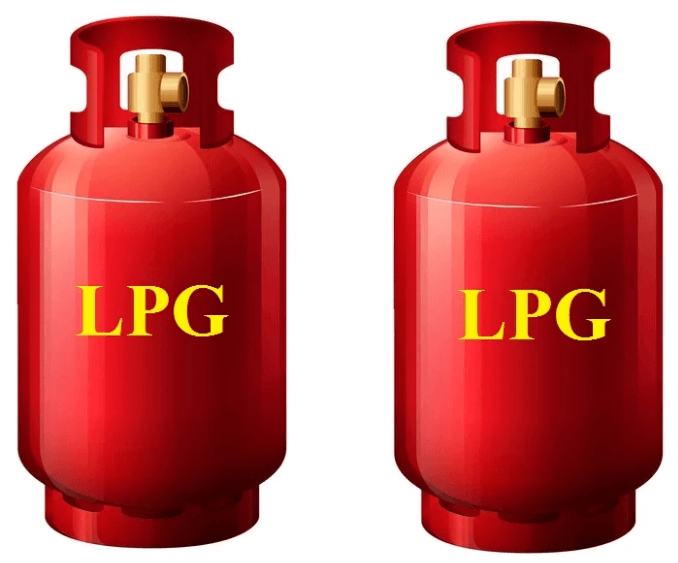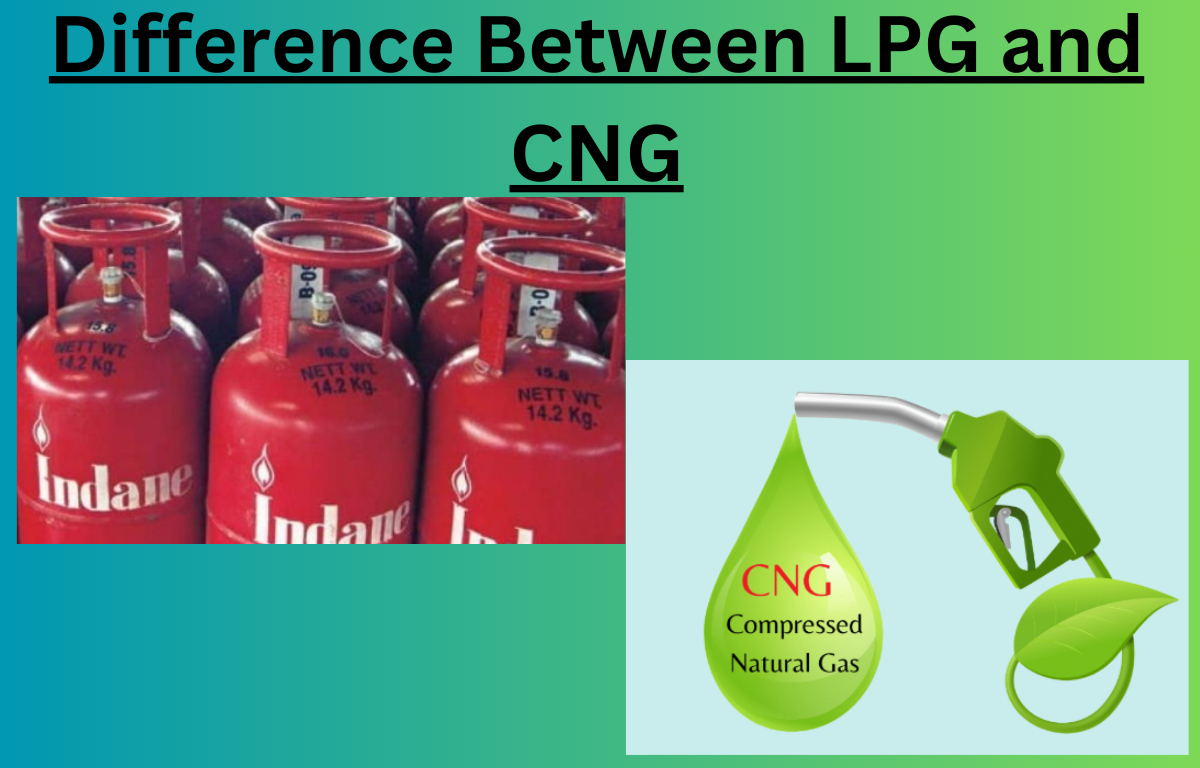What is CNG?
CNG stands for Compressed Natural Gas. It is a type of fuel used in vehicles like cars and buses. CNG Is made from natural gas, which comes from deep inside the earth’s surface. It is stored in special tanks under very high pressure. People use CNG because it is cheaper and cleaner than petrol and diesel. When CNG is used in vehicles, they produce less amount of smoke and harmful gases, which helps in the reduction of Air Pollution. CNG is also considered safer because it catches fire less easily than other fuels. It is good for the environment and also helps in saving money.

Define LPG
LPG, or Liquefied Petroleum Gas, is a clean and safe fuel that is used at our home for cooking purposes. It comes in big metal cylinders and is filled with a gas that is turned into liquid by pressing it tightly. When we open the stove, this gas burns to make a fire, which helps us to cook food quickly. LPG is considered much better than the older methods of making fire, like burning wood or coal.

When we use wood or coal, a lot of smoke comes out, which makes the air dirty and causes coughing. LPG on the other hand, burns without any smoke and starts quickly with just matchsticks or lighters. It keeps the kitchen clean and does not harm our health. Using LPG also saves trees, as we do not have to cut them for firewood.
Difference Between CNG and LPG
The Main difference between Compressed Natural Gas (CNG) and Liquefied Petroleum Gas (LPG) is their composition. CNG is mostly made of methane, while LPG contains propane and butane. CNG is considered more eco-friendly, whereas LPG is used for both cooking and heating purposes. For more differences between LPG and CNG go through the table mentioned below.
| Difference Between CNG and LPG | ||
| Aspects | CNG | LPG |
| Full Form | Compressed Natural Gas | Liquefied Petroleum Gas |
| State | CNG is a gas at room temperature | LPG on the other hand is a liquid at room temperature. |
| Main Components | The main component of CNG is Methane. | The main components of LPG are propane and butane. |
| Storage | It is stored in high-pressure cylinders as a gas. | LPG is stored in liquid form in pressurized cylinders. |
| Color | Colorless, with no smell, but an odor is added for safety. | Colorless, but has a strong smell added for safety. |
| Uses | CNG is used as a fuel for vehicles, cooking, and in some industries. | LPG is used for cooking, heating, and in vehicles (LPG vehicles). |
| Energy Content | Lower energy content per unit compared to LPG. | Higher energy content per unit compared to CNG. |
| Cost | Usually, CNG is considered cheaper than LPG. | More expensive than CNG in many places. |
| Environmental Impact | Burns cleaner produces less carbon dioxide and causes less pollution. | Produces more carbon dioxide when burned. |
| Availability | CNG is more common in urban areas and specific areas with CNG stations. | LPG is more widely available in rural and urban areas. |
Benefits of CNG and LPG
There are many benefits to using Compressed Natural Gas (CNG) and Liquefied Petroleum Gas (LPG). Some of them have been discussed below.
Benefits of CNG
- Eco-Friendly: CNG produces fewer harmful emissions compared to petrol or diesel, reducing air pollution.
- Cost-Effective: It is generally cheaper than other conventional fuels, making it economical for vehicle owners.
- Higher Mileage: Vehicles running on CNG often provide better mileage, reducing fuel costs further.
- Safety: CNG is lighter than air, so in case of leakage, it disperses quickly, reducing fire risks.
- Engine Longevity: CNG burns cleaner, leading to less carbon buildup in the engine and improving its lifespan.
Benefits of LPG
- Clean Energy Source: LPG produces lower greenhouse gas emissions, contributing to a cleaner environment.
- Versatile Use: It is used for cooking, heating, and in vehicles, offering flexibility in usage.
- Efficient Burning: LPG has a high calorific value, ensuring efficient energy output with minimal wastage.
- Convenient Storage: It can be easily stored and transported in cylinders, making it accessible even in remote areas.
- Reduced Engine Wear: In vehicles, LPG burns cleaner than petrol or diesel, leading to less engine wear and tear.
















